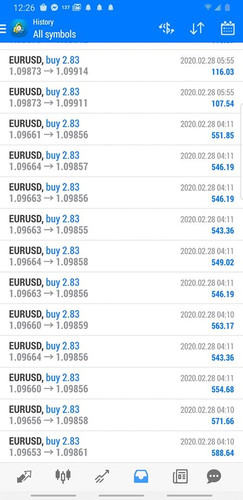While tons of exchange is completed for practical purposes, the overwhelming majority of currency conversion is undertaken with the aim of earning a profit. The amount of currency converted a day can make price movements of some currencies extremely volatile. It is this volatility which will make forex so attractive to traders: bringing a few greater chance of high profits, while also increasing the danger .
How do currency markets work?
Unlike shares or commodities, forex trading doesn't happen on exchanges but directly between two parties, in an over-the-counter (OTC) market. The forex market is travel by a worldwide network of banks, spread across four major forex trading centres in several time zones: London, New York, Sydney and Tokyo. Because there's no central location, you'll trade forex 24 hours each day .
There are three different types of forex market:
Spot forex market: the physical exchange of a currency pair, which takes place at the precise point the trade is settled – ie ‘on the spot’ – or within a short period of time
Forward forex market: a contract is agreed to shop for or sell a group amount of a currency at a specified price, to be settled at a group date within the future or within a range of future dates
Future forex market: a contract is agreed to shop for or sell a group amount of a given currency at a group price and date within the future. Unlike forwards, a futures contract is legally binding
Most traders speculating on forex prices won't decide to take delivery of the currency itself; instead they create rate of exchange predictions to require advantage of price movements in the market.
What is a base and quote currency?
A base currency is that the first currency listed during a forex pair, while the second currency is named the quote currency. Forex trading always involves selling one currency so as to shop for another, which is why it's quoted in pairs – the worth of a forex pair is how much one unit of the bottom currency is worth within the quote currency.
Each currency within the pair is listed as a three-letter code, which tends to be formed of two letters that represent the region, and one standing for the currency itself. For example, GBP/USD may be a currency pair that involves buying the good British pound and selling the US dollar.
So within the example below, GBP is that the base currency and USD is that the quote currency. If GBP/USD is trading at 1.35361, then one pound is worth 1.35361 dollars.
If the pound rises against the dollar, then one pound are going to be worth more dollars and therefore the pair’s price will increase. If it drops, the pair’s price will decrease. So if you think that that the bottom currency during a pair is probably going to strengthen against the quote currency, you'll buy the pair (going long). If you think that it'll weaken, you'll sell the pair (going short).
What moves the forex market?
The forex market is formed from currencies from everywhere the planet , which may make rate of exchange predictions difficult as there are many factors that would contribute to cost movements. However, like most financial markets, forex is primarily driven by the forces of supply and demand, and it's important to realize an understanding of the influences that drives price fluctuations here.
Central banks
Supply is controlled by central banks, who can announce measures which will have a big effect on their currency’s price. Quantitative easing, as an example , involves injecting extra money into an economy, and may cause its currency’s price to drop.
News reports
Commercial banks and other investors tend to require to place their capital into economies that have a robust outlook. So, if a positive piece of stories hits the markets a few certain region, it'll encourage investment and increase demand for that region’s currency.
Unless there's a parallel increase in supply for the currency, the disparity between supply and demand will cause its price to extend . Similarly, a bit of negative news can cause investment to decrease and lower a currency’s price. This is why currencies tend to reflect the reported economic health of the region they represent.
Market sentiment
Market sentiment, which is usually in reaction to the news, also can play a serious role in driving currency prices. If traders believe that a currency is headed during a certain direction, they're going to trade accordingly and should convince others to imitate , increasing or decreasing demand.
Economic data
Economic data is integral to the worth movements of currencies for 2 reasons – it gives a sign of how an economy is performing, and it offers insight into what its central bank might do next.
Say, for instance , that inflation within the eurozone has risen above the two level that the ecu financial institution (ECB) aims to take care of . The ECB’s main policy tool to combat rising inflation is increasing European interest rates – so traders might start buying the euro in anticipation of rates rising . With more traders wanting euros, EUR/USD could see an increase in price.
Credit ratings
Investors will attempt to maximise the return they will get from a market, while minimising their risk. So alongside interest rates and economic data, they could also check out credit ratings when deciding where to take a position .

| 
